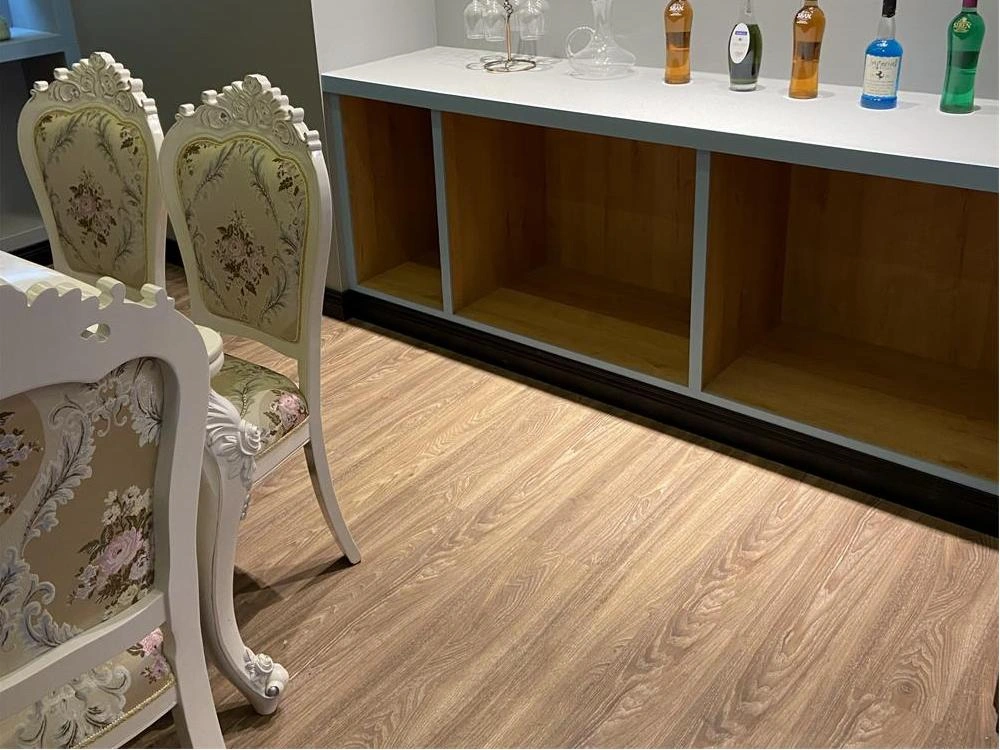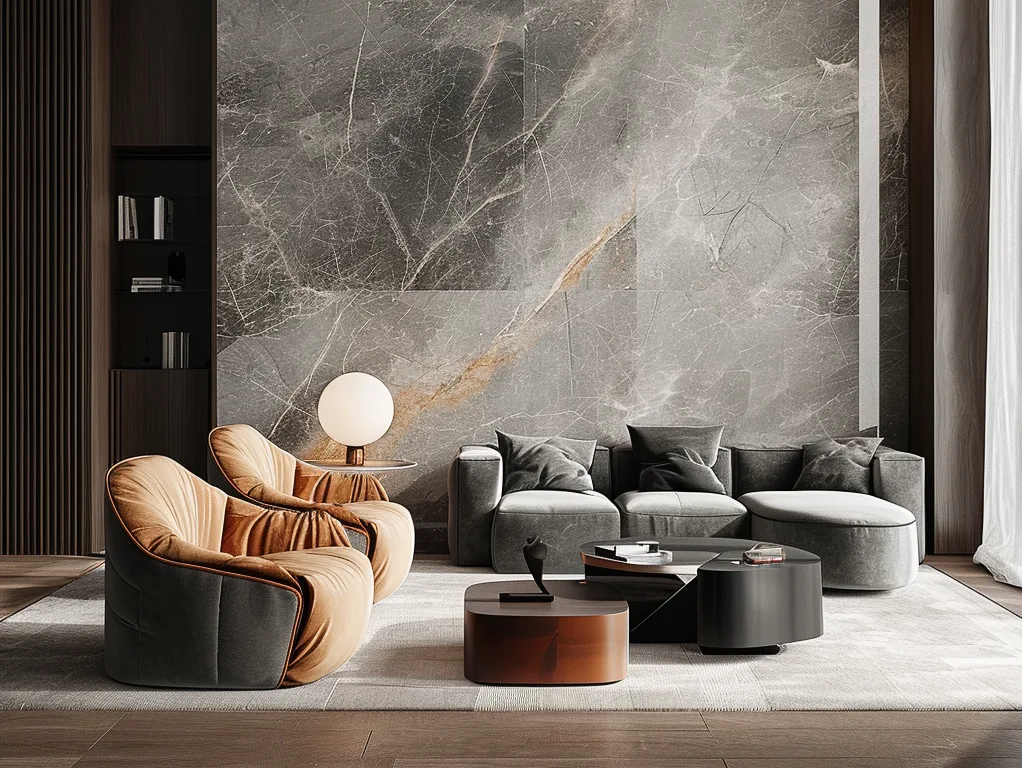Introduction to WPC Material
What is WPC?
Wood-Plastic Composite (WPC) is a revolutionary composite material composed of wood and high-density polyethylene (HDPE), creating products that emphasize durability, aesthetics, and low maintenance. This hybrid substance aims to mimic the aesthetic of natural wood and can boast structural improvements almost impossible to achieve with real timber, as well as practical performance features that make it suitable for use as flooring. WPC (Wood Plastic Composite) is a new breed of flooring solution for homes and workspaces, targeting still an eco-friendly group requiring essential yet stylish floorings.
Composition and Technology Behind WPC
WPC is primarily composed of about 30% HDPE, 60% wood fibers and the remaining 10% is made of additives that improve its performance and durability. This distinct combination provides WPC with a number of properties such as incredible moisture and stain resistance, yet still lightweight enough to provide that soft-on-your-feet feel. In addition, WPC is produced from advanced manufacturing technology that makes it UV stable and able to withstand different environmental conditions without disintegrating.
Construction of WPC Flooring
Components of WPC Flooring
UV Coating
WPC flooring is lined with a layer of UV coating that isolates the ultraviolet rays from penetrating these surfaces. This coating serves the dual purpose of protecting against fading and discoloration during its lifespan, as well as giving the flooring a shine to that is reminiscent of traditional hardwood. The coating not only reduces the chances of fading or discoloration further down the line, it also spreads out a great aesthetic finish that adds luster to the flooring and makes it look more like real hardwood.
Wear Layer
WPC flooring has a finish that makes it very durable and prevents the floors from scratching, scuffing and daily wear and tear due to foot traffic. The slip layer is usually a durable vinyl that can handle day-to-day wear & tear while still looking great for decades. This layer is generally crafted out of premium vinyl material that can endure daily wear and tear while maintaining its aesthetic appeal for years on end
Decorative Layer
Under the wear layer is a decorative layer, it is important as it serves as the visual design of your flooring. A vinyl film layer that imitates the appearance of natural materials like wood or stone forms this surface layer, giving a multitude of design choices to complement most interior decor styles.
Hot Melt Adhesive
WPC flooring consists of different layers held together either using heat melt adhesive or glue. This extremely high-strength adhesive holds the pieces together and is responsible for keeping the flooring structural to give you a durable, long-lasting performance. It is a highly adhesive that keeps them stuck together contributing towards the durability and performance aspect of flooring as a whole.
Core Layer
The innermost layer of WPC flooring is usually a combination of wood fibers and HDPE, offering dense support for its upper layers. This core is designed to be lightweight and strong, making it waterproof and perfect for wet areas. This core is designed to be lightweight but still stable and waterproof making it perfect for wet areas.
Under Layer
The underlayer acts as an extra cushion to provide comfort and absorb sound when walking on top of the flooring. It acts as a sound absorbent and helps you avoid such loud noises while walking for both residential and commercial usage which makes WPC floorings very popular. It adds a layer of padding that reduces noise both inside the home and between floors, making WPC flooring ideal for home or multi-unit living.
Manufacturing Process
From Raw Materials to Finished Product
The first step to producing WPC flooring is the selection of the best quality raw materials such as wood fibers and HDPE. These materials are thoroughly mixed, cooked, and set into each layer of the flooring. After extraction from the tree, the product goes through a strong quality control process for industry standards before it gets cut and packaged. Not surprisingly, the whole process embraces sustainability, on account of WPC being built from recycled materials hence representing an eco-friendly selection among flooring solutions.
Benefits of WPC Flooring
Durability and Longevity
Resistance to Moisture and Stains
The most prominent feature of WPC flooring is its superior water and stain resistance. This property makes it especially perfect for highly humid regions like the bathrooms and kitchens. Unlike wood flooring, which is highly susceptible to weakening and bending as a result of moisture intrusion, WPC maintains its structural integrity ensuring longevity.
Impact Resistance
Unlike many types of flooring, high-quality WPC flooring is durable enough to withstand the daily abuse it experiences as a result of day-to-day activities and heavy foot traffic impacts leaves little in terms of damage. This resistance to wear is advantageous in commercial facilities where foot traffic on the flooring is a constant experience. Its sturdy design and multi-layer structure, known as the honeycomb-style core, help it absorb powerful impacts so that nothing is damaged.
Ease of Maintenance
Cleaning Requirements
Keeping the uniformity of outlook and performance of WPC flooring is very easy-going and simple. Sweeping can be done regularly and mopping every now and again is quite enough to keep the surface clean and free from litter. This attractiveness of low-maintenance requirement appeals to homeowners along with businesses bringing practicality back again to flooring health maintenance. It is an effective Flooring care option that both Homeowners and businesspeople can appreciate due to its low-maintenance requirement.
Repair and Replacement Considerations
If some area of the WPC floor is broken, repair and replacement choices are simpler. With many manufacturers selling individual planks or even tiles, it’s possible to replace just the damaged area instead of removing entire sections of flooring. It saves time, reduces the cost of labor and strengthens the utility of WPC flooring.
Aesthetic Versatility
Variety in Design and Color Options
WPC flooring comes in a variety of designs and colors, so it can match almost any home interior. WPC can easily replicate these finished out with classic wood tones like oak or go trendy with gray tones to natural stone if that is the desired aesthetic in a home)
Integration with Different Interior Styles
WPC flooring’s versatility to complement numerous styles found in a home attracts many different types of consumers. WPC provides a contrast between rustic and traditional styles with smooth, modern, minimalistic designs that complement any space.
Applications of WPC Flooring
Residential Settings
WPC flooring is best known for its use in residential areas, especially those exposed to moisture like kitchens, bathrooms and basements. Thanks to its non-absorbency, WPC flooring boasts durability while remaining beautiful through spills and humidity. For DIY enthusiasts, the simplicity of installation makes it very appealing as there is no need for glue and extensive tools for a click-lock system. Because who really has time for actual wood and stone when there are better material alternatives available featuring a wide variety of natural-looking designs, residents can create their dream space without sacrificing style or practicality.
Commercial Settings
WPC flooring finds its way into a lot of commercial spaces that like the outstanding performance qualities can provide these types of environments with heavy footfall. The good combination of durability and a bit of aesthetic value is why WPC can be appealing to retailers, offices, and hospitality venues. Its impact resistance minimizes damage to the flooring which saves on long-term costs from frequent repairs or replacements. The WPC floor can be cleaned the right way and they come back to life as new, meaning that clients and employees have a clean environment in these comfortable places all the time, thus encouraging everyone to get in through those doors.
Outdoor Uses
WPC flooring is no longer only for indoor; it has also found its way to the outdoors with versatile applications on patios, decks and outdoor dining areas. Since WPC has its natural properties, it can easily withstand different weather conditions and this ensures that the flooring does not get distorted even with changes in temperature. Another attribute that makes WPC an excellent selection, including. The anti mold and anti-corrosion properties of WPC materials are also applied in WPC tiles, which are widely used for outdoor space
Latitude’s Customization Services and Standards Compliance
Tailored Solutions for Unique Needs
Acknowledging that various projects have unique needs, Latitude provides WPC flooring customization service to suit different demands. It involves providing an assortment of sizes, finishes, and colors that match project requirements. Latitude WPC is designed to work where it needs to but also look the way you want it to, regardless of your specific architecture or lifestyle. In addition, customization is simply not limited to chemical resistances and texture, meaning that customers will invariably find the perfect WPC floors for their individual durability and maintenance requirements.
Adherence to Industry Standards
Latitude ensures that this WPC makes the compliance of industrial standards in a world-advanced manner. The company pledges to manufacture eco-friendly and sustainable flooring based on guidelines set by environmental agencies. Strict Testing For Certification Like EN14372 And GB4085-83 Their WPC products are safe for the consumer. By making this investment in compliance, consumers can have confidence that the flooring is going to perform well and continue to be sustainable through its lifecycle.











